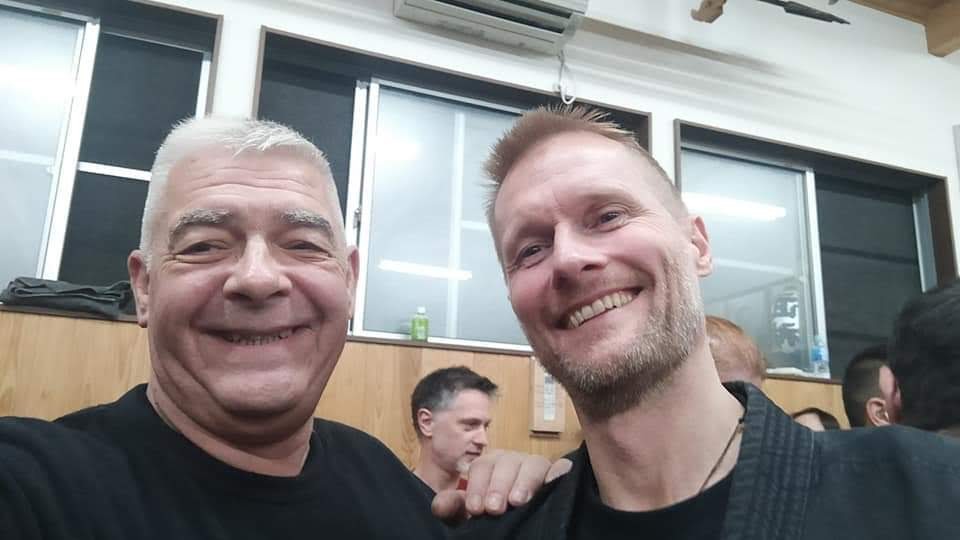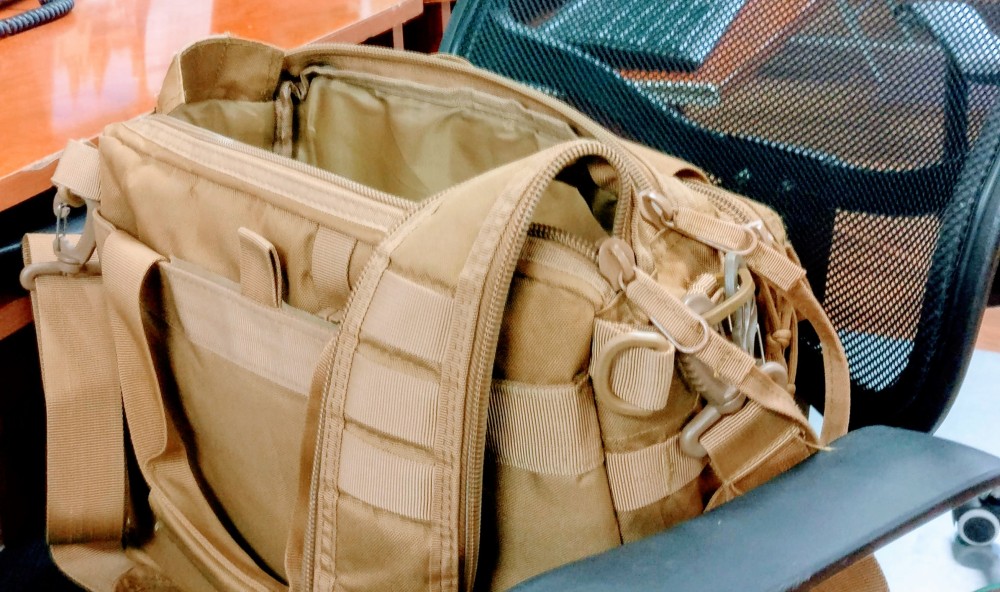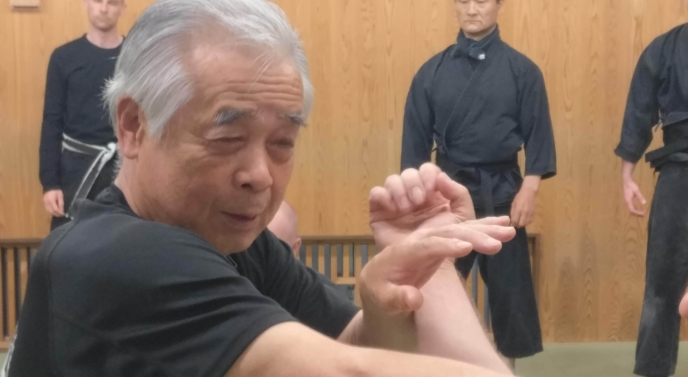Yokusei Jutsu: The Art Of Controlling
From Shiro Kuma by kumablog
 My friend Philip Pihl wrote from Japan yesterday after class. Hatsumi Sensei expressed his mastery of Mutō Dori using the body, the sword, and the knife. Mutō Dori is still the major training point to learn and understand how to express it with our Taijutsu. We entered the realm of Mutō Dori two years ago in Japan. It looked like the next logical step in our progression on the path of Budō.
My friend Philip Pihl wrote from Japan yesterday after class. Hatsumi Sensei expressed his mastery of Mutō Dori using the body, the sword, and the knife. Mutō Dori is still the major training point to learn and understand how to express it with our Taijutsu. We entered the realm of Mutō Dori two years ago in Japan. It looked like the next logical step in our progression on the path of Budō.
During this period, I attended many classes at the honbu. Each time I am puzzled by the simple complexity of Sensei’s movements. It was like he wasn’t there. The Uke seems to be fighting alone. Their attacks were the reason for their defeat. Back in 2017, Sōke introduced a more advanced version of Mutō Dori. Until then, we knew it as being the ability to fight weapons when unarmed. Sensei used two concepts to help us. They should make us able to put into motion, the type of movements Hatsumi is showing.
The first concept is Yokeru Janai (1), or “don’t avoid the attack.” And the second one is Tatakai Janai (2), or “don’t fight.” But it is easier said than done! And I’m still not sure if I can do it today, and there is a reason for that. These concepts are not logical with usual training (except if you are a bodyguard).
In a fight, you want to fight back, while avoiding the attacks of your opponent. Our Budō training has been training us like that for years. When an attack comes, we dodge the fist or the weapon and block it in some way. Then we counter-attack in the openings. With Mutō Dori, we have to do the opposite, that is why it is difficult.
Philip quoting Sensei, wrote: “do not evade. It is easy to kill and destroy, but control is more difficult.” We have been playing with the idea of “control” since last November, but somehow, it makes more sense today. This sentence gives a “way in.” We do not “evade the attack,” but we control the attacker before the attack arrives. I understand it as another manifestation of Yūgen no Sekai. (3)
We move in this invisible, and non manifested moment when Uke takes the decision to attack. During a millisecond, we can control the opponent only if we don’t try to avoid the Tsuki, and do not fight back.
Through my training with Sensei over the past 35 years, I see how he made us walk the path. First, as “ninja kids” with ninjutsu. Then to Budō with Budō Taijutsu. Then with Juppō Sesshō and Ninpō Taijutsu. And now with a smarter version of Mutō Dori.
I like to call it “Yokusei Jutsu” (4), or the technique of controlling Uke body and mind. The goal of the Bujinkan is not war but peace. If our actions can create a state of peace around us. If our presence and our attitude can prevent bad things from happening. Then I guess we have been training correctly.
“We don’t kill or destroy” the enemy; we simply control his actions. We are not warmongers, we are peacekeepers.
_______________________________
1 避けるじゃ無い, Yokeru Janai; Don’t avoid the attack
2 戦いじゃ無い Tatakai Janai; don’t fight; don’t get into a conflict
3 幽玄の世界, Yūgen no Sekai. Yūgen is subtle grace, hidden beauty; mysterious profundity; elegant simplicity. Sekai is: the world, the universe, dimension
4 抑制, Yokusei; control; restraint; suppression; constraint; curtailment; inhibition; check; curb
Visit http://www.koimartialart.com the Bujinkan online streaming platform with 150Gb of videos!
…
 When you go out for a trek in the mountains, you carry a backpack. Everything you might need during the long hours of walking is inside.
When you go out for a trek in the mountains, you carry a backpack. Everything you might need during the long hours of walking is inside.






